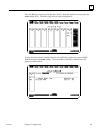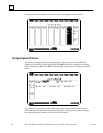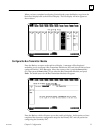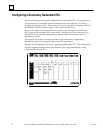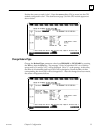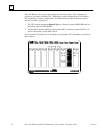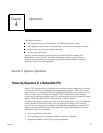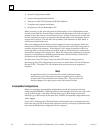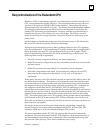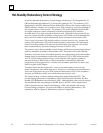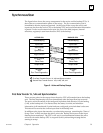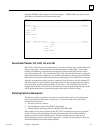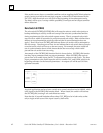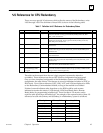
4
56 Series 90-70 Hot Standby CPU Redundancy User’s Guide – December 1993
GFK-0827
4. System Configuration verified.
5. System interrogated and initialized.
6. Presence of other CPU detected and RCMs initialized.
7. Complete user program verification.
8. Synchronize with the Redundant CPU.
When powering up the unit configured as the Secondary Unit in a Redundant system
and no remote unit (the Primary Unit) is detected, the Secondary Unit will wait up to 15
seconds to see if the remote unit will also power up. If after 15 seconds, the remote unit
has not completed its power up sequence, then the Secondary Unit will assume that no
remote unit is present. If at this time, the Secondary Unit transitions to RUN mode, it
will do so as a stand-alone unit.
If the unit configured as the Primary Unit completes its power-up sequence before the
remote unit (the Secondary Unit) the Primary Unit does not wait for the remote unit to
complete its power-up sequence. If the Primary Unit is setup to transition to RUN on
power-up (that is, was powered-down in RUN mode), it will transition to a stand-alone
unit without waiting for the remote unit. When the remote unit completes its power-up
sequence, it will attempt to establish communications with the Primary Unit and will
synchronize if also transitioning to RUN mode.
In either case, if one CPU fails to notify the other CPU that it is either present or
powering up, this CPU will proceed to power-up as a stand-alone CPU and will become
the active CPU. The other CPU will resynchronize once the power-up sequence is
complete.
Note
In applications where it is desired to have a fully redundant system
upon power-up, the Secondary Unit must complete power-up first but
no more than 15 seconds before the Primary Unit. The way to be sure
that this happens is to apply power to the Secondary Unit first.
Incompatible Configurations
When two units have incompatible configurations stored (for example, both units
configured for PRIMARY or differing blocks for data transfer), then only one of the units
can go to RUN mode. If the other unit attempts to go to RUN mode or both units
attempt to go to RUN mode at the same time, a FATAL incompatible configuration fault
will be logged.
If one unit is configured for CPU Redundancy and the other has no configuration, then
both units may go to RUN mode at the same time but they will not be synchronized and
only the unit that has been configured will drive outputs.




